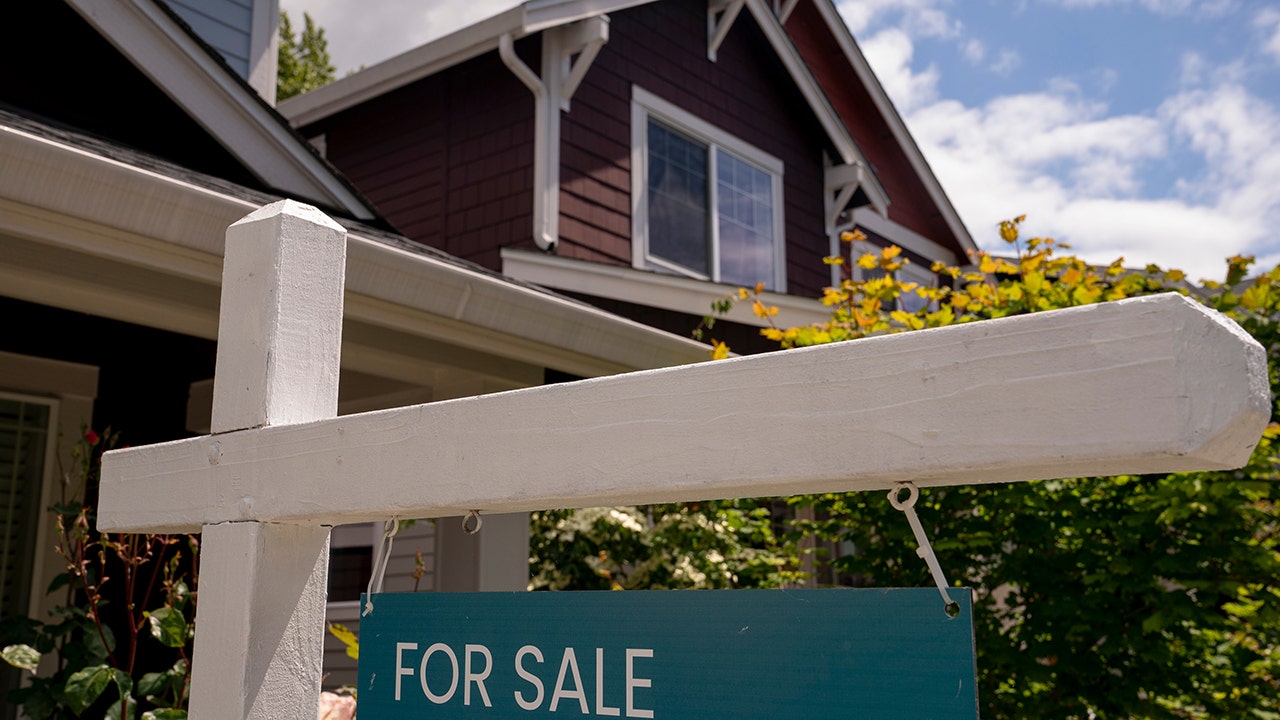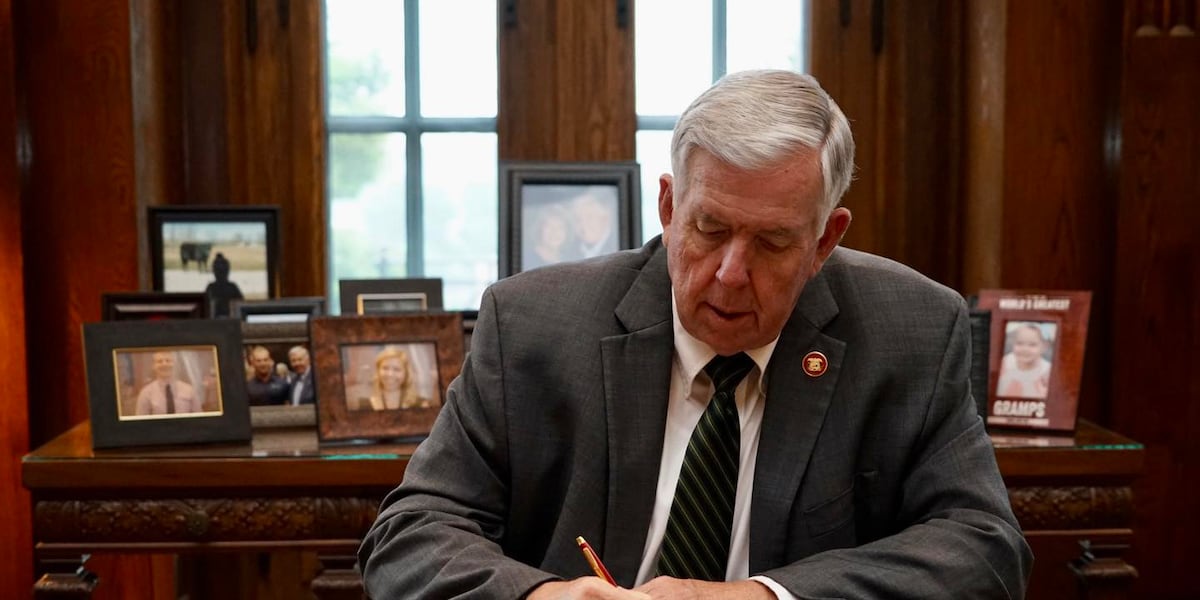California
California Republican lawmaker reacts to 'crazy' bill that would give undocumented first-time homebuyers money

California Democrats are “crazy” for passing a progressive legislature that would give illegal immigrants up to $150,000 in first-time homeownership, officials said.
The bill, AB 1840, would require the California Housing Finance Authority’s home purchase assistance program, or California Dream for All Program, to include illegal immigrants’ applications.
The bill cleared the state Senate on Tuesday.
CALIFORNIA CLOSE TO APPROVING $150K LOANS FOR ILLEGAL IMMIGRANTS TO HELP PURCHASE HOMES
Illegal immigrants in California could be eligible for state assistance in buying a home under a bill the state Legislature sent to Democratic Gov. Gavin Newsom (David Ryder/Bloomberg via Getty Images)
In a statement to Fox News Digital, California Assembly Republican Leader James Gallagher (R-Yuba City) argued that the legislation would exacerbate the border crisis, the housing crisis and the high cost of living in the Golden State.
EX-CALIFORNIA SLAMS STATE BILL THAT GIVES ILLEGAL IMMIGRANTS HOUSING LOANS: ‘ASININE’
“I didn’t know it was possible to make the border crisis and the housing crisis worse with just one vote, but Democrats found a way,” Gallagher said. “Giving taxpayer-funded housing subsidies to illegal immigrants will drive costs even higher and encourage more chaos at the border.”
“This is crazy, and it needs to stop,” he said.

A view of the California state capitol building on National Urban League California Legislative Advocacy Day on March 13, 2024 in Sacramento, California. (Arturo Holmes/Getty Images for National Urban League)
The California Dream for All program passed despite funds running out just 11 days after being instituted in June, which was awarded to 1,700 first-time homebuyers at the time. Finding more funding for the program was the prime concern in floor debate.
The program gives first-time homebuyers up to 20% of a home’s value or up to $150,000 as down payment assistance. The bill now heads back to the California state Assembly to go over revisions made by the state Senate.

California Gov. Gavin Newsom greets people, Monday, July 8, 2024, near the Common Man Roadside Market and Deli, in Hooksett, N.H. (AP Photo/Steven Senne)
The bill passed by 12 votes, following the party line at 23-11. Some Democrats present did not vote.
CLICK HERE TO GET THE FOX NEWS APP
California Gov. Gavin Newsom has not said whether he will sign the bill into law if it clears the legislature before the Aug. 31 deadline.
In a statement to Fox News Digital, Gov. Newsom’s press secretary said that the California governor will evaluate the legislation when it reaches his desk.
Fox News Digital’s Jasmine Baehr contributed to this report.

California
Can California keep ICE away from schools? Lawmakers want to try as crackdowns loom

In summary
California legislators want to limit deportation actions at schools, but they can’t ban immigration officials.
California lawmakers are proposing steps to protect K-12 students and families from mass deportations — although the real value of those proposals may be symbolic.
A pair of bills in the Legislature — AB 49 and SB 48 — would keep federal agents from detaining undocumented students or their families on or near school property without a warrant. The bills are a response to President-elect Donald Trump’s threat to deport undocumented immigrants, a move which could have major consequences for schools in California, which funds its schools based on attendance and where 12% of students have at least one undocumented parent.
Both bills would make it harder and more time-consuming for agents to enter schools or day care centers. But they can only delay, not stop, arrests.
“In no way can these bills override federal law,” said Kevin Johnson, a law professor at UC Davis. “But the bills respond to a great concern in the community that it’s not safe to take your children to school. … I can’t emphasize enough how important this is, how vulnerable undocumented immigrants feel right now.”
AB 49, proposed by Assemblymember Al Muratsuchi, a Democrat from Torrance, would require immigration agents to obtain written permission from the superintendent before coming onto school property. It also bars agents from being in rooms where children are present. SB 48, introduced by Sen. Lena Gonzalez, a Democrat from Long Beach, would prohibit local police from cooperating with federal agents — such as assisting in arrests or providing information about families’ immigration status — within one mile of a school. It also bars schools from sharing student and family information with federal authorities.
School districts have also doubled down on their efforts to protect students and families. Los Angeles Unified has partnered with legal aid organizations to assist families and instructed schools not to ask students about their immigration status. San Francisco Unified has similar policies.
“(San Francisco Unified) is a safe haven for all students regardless of citizenship status,” Superintendent Maria Su wrote to the community after the November election. “SFUSD restates our position that all students have the right to attend school regardless of their immigration status or that of their family members.”
Schools as safe havens
Schools have long been safe havens for immigrant students. Under a 1982 Supreme Court ruling, public schools must enroll all students regardless of their immigration status and can’t charge tuition to students who aren’t legal residents. And since 2011, federal guidelines discourage agents from making immigration arrests at schools, hospitals, churches, courthouses and other “sensitive locations.”
But Trump said he plans to eliminate the “sensitive locations” guidelines, and the conservative Heritage Foundation, which published the right-leaning Project 2025 manifesto, is encouraging states to charge tuition to undocumented K-12 students. That could set up the possible overturn of the Supreme Court decision guaranteeing access to school for undocumented students. The foundation’s rationale is that government agencies such as schools are already overburdened and need to prioritize services for U.S. citizens.
“The (Biden) administration’s new version of America is nothing more than an open-border welfare state,” Lora Ries, director of the Heritage Foundation’s Border Security and Immigration Center, wrote. “No country can sustain or survive such a vision.”
Muratsuchi, chair of the Assembly Education Committee, said he was inspired to author AB 49 just after the election, when he listened to the concerns of immigrant students in the political science class he teaches at El Camino Community College in Torrance.
“It became clear there was more and more fear among my students, not only for themselves but for their families. The fear of families being torn apart is very real,” Muratuschi said. “We want to send a strong message to our immigrant students that we’re going to do everything we can to protect them.”
‘Too scared to speak up’
For most undocumented families, deportation would mean a plunging into poverty and in many cases, violence. Nahomi, a high school senior in Fresno County whom CalMatters is identifying by her middle name because of her immigration status, described the threat of deportation as “a major worry for my family and I. Our lives could change completely in a blink of an eye.”
“I can’t emphasize enough how important this is, how vulnerable undocumented immigrants feel right now.”
Kevin Johnson, law professor at UC Davis
Nahomi and her parents arrived in California in 2011 from the city of Culiacan in Sinaloa, Mexico, an area plagued by widespread violence. They initially planned to stay until Sinaloa became safer, but once they settled in the Central Valley they decided the risks of returning outweighed the risk of deportation, so they stayed. Nahomi’s father works in construction and her mother is a homemaker, raising Nahomi and her younger sister.
While she and her family fear deportation, Nahomi is not afraid to attend school. She said schools can help families know their rights and help children feel safe.
“I feel very welcomed and safe there,” she said. “It is a very diverse high school and I just feel like any other student. … (But) a lot of these families are probably too scared to speak up about doubts they might have.”
Politically unpopular?
Patricia Gándara, an education professor and co-director of the Civil Rights Project at UCLA, said the risk of federal agents arresting students at schools is probably small. It’s unclear how many children in K-12 schools are undocumented, but it’s probably a relatively small number, she said. In any case, immigration enforcement that affects children almost always sparks public outcry from both parties, she said.
“Some people might say they’re anti-immigrant, but it’s another thing entirely when the family up the street, whom they’ve known for 20 years, suddenly gets deported, or your kid’s best friend gets deported,” said Gandara, who’s studied the topic extensively. “It’s politically very unpopular.”
Still, the proposed bills could send a powerful message that schools are safe places, she said. Immigration crackdowns can have a significant impact on student attendance, a Stanford study found, which can lead to less funding for schools, particularly low-income schools that enroll large numbers of immigrant children.
Immigration crackdowns can also lead to an increase in bullying, anxiety and general uncertainty on campus, not just for immigrant children but for everyone, Gándara said. Teachers, in particular, experience high levels of stress when their students’ safety is endangered, she said.
Schools can’t rely solely on state laws to protect immigrant families, though. They should partner with local nonprofits to provide legal services and other support to families who need assistance.
“Schools are one of the last places immigrant families feel safe,” Gandara said. “But as soon as (federal agents) move into schools, they’re not so safe any more. These bills say, ‘We’re not going to sit back and let this happen. Not all of government is against you.”
California ‘one of the best places to be’
Both bills are awaiting hearings in the Legislature. Tammy Lin, supervising attorney with the University of San Diego Immigration Clinic, expects California to continue to take steps to protect undocumented families, but political conflicts will be inevitable.
The incoming Trump administration is likely to battle California and other left-leaning states over immigration matters. Even within California, conflicts are likely to erupt between state leaders and those in more conservative regions, or even between agencies in the same area. In San Diego County, for example, the Board of Supervisors ordered the sheriff’s office to not notify federal immigration officers when it releases suspected undocumented inmates from jail, but the sheriff refused to comply.
Lin also said she wouldn’t be surprised if there’s an attempt to overturn the Supreme Court ruling guaranteeing education to undocumented children, potentially paving the way for other immigrants’ rights to be reversed.
“It’s a slippery slope,” Lin said. “Immigrants know this, which is why there’s immense fear and uncertainty right now. But bills like these show that California is still one of the best places you can be.”
Suriyah Jones, a member of the CalMatters Youth Journalism Initiative, contributed to this story.
Source link
California
California increases paid family leave and disability benefits to historic levels

LOS ANGELES (KABC) — A new California law aims to ease the financial burden during some of life’s biggest transitions and challenges.
This year, paid family leave and disability benefits increased to historic levels.
“Previously, most workers would only receive 60% of their income,” explained Katherine Wutchiett, a senior staff attorney at the nonprofit organization, Legal Aid At Work.
“The dream of being able to take care of your baby, newborn baby, or being able to take care of a family member that’s ill, you couldn’t do it,” said California Sen. María Elena Durazo (D-Los Angeles.)
What’s the new California parental leave law?
Under the new law authored by Durazo, eligible California workers can now receive between 70% and 90% up to a cap.
“As a mom of two who just recently had a baby, I think increasing it to 90% is really important,” said Savannah Powell, who also stressed parental leave should be available for a longer period of time. “Families need that to stay afloat.”
Under the new law, those who make about 70% of the state’s average weekly wage — about $63,000 or less annually — will receive 90% of their income.
“Folks who make more than that will receive 70% to 90% of their income,” said Wutchiett.
The benefits apply to eligible workers filing for state disability insurance, or paid family leave. That includes those who may be navigating military deployment, adoption or caring for a seriously ill family member.
“We’ve got, in California, 1.3 million individuals that are caregivers,” said Gloria Crockett, the regional vice president and executive director for the California, Southland chapter of the Alzheimer’s Association.
The organization did not take a position on the bill.
Part of what the law does is remove a cap that allowed higher income earners to stop contributing to the fund for these state benefits.
“These are all inequities that we identified and we said, ‘We have to fix this,’” said Durazo.
Legal Aid At Work is one of the organizations that co-sponsored the bill.
Wutchiett explained that while the increase applies only to claims filed beginning in 2025, there are some options.
“If, for instance, somebody hasn’t applied yet, and maybe they started taking time off from work in the last week of December, they could make the decision to date their claim just starting in January,” she said.
Copyright © 2025 KABC Television, LLC. All rights reserved.
Source link
California
California’s first snow survey of 2025 shows nears average snowpack, but more is needed

California water officials reported a good start to the snowpack in the Sierra Nevada but are also saying more snow is needed through the rest of winter to stay on track.
In the first snow survey of the year at the Phillips Station, the California Department of Water Resources said the area currently sits at 91 percent of its average. The survey revealed a snow depth of 24 inches and nine inches of snow water.
Looking statewide, the DWR says California is at 108 percent of average for early January. Electronic readings revealed a snow water equivalent of nearly 11 inches.
A year ago, the DWR said the state was at 28 percent.
The strong start to the season comes after record-breaking heat from the summer carried into the fall. Things started to change when an atmospheric river broke multiple rainfall records in Northern California and a series of storms in December added to those totals.
Despite the near-average numbers, officials are saying more snow is needed throughout the winter.
“While our snowpack looks good now, we have a long way until April when our water supply picture will be more complete,” said DWR director Karla Nemeth. “Extreme shifts between dry and wet conditions are continuing this winter and if the past several years are any indication, anything could happen between now and April and we need to be prepared.”
Back in 2022, Janurary’s snowpack was well above average but the state dried out for the rest of the winter, erasing those early totals.
But California’s reservoirs are sitting at a healthy spot after two consecutive years with above average snowfall. Statewide, reservoirs are at 121 perfect of average, the DWR says.
California’s largest reservoir, Shasta Lake, is 130 percent above the historical average while the state’s second-largest reservoir, Lake Oroville, is 126 percent above the historical average.
The DWR conducts monthly snow surveys at the Phillips Station from January through April, sometimes in May. The next survey is scheduled for Feb. 3.
-
/cdn.vox-cdn.com/uploads/chorus_asset/file/25672934/Metaphor_Key_Art_Horizontal.png)
/cdn.vox-cdn.com/uploads/chorus_asset/file/25672934/Metaphor_Key_Art_Horizontal.png) Technology1 week ago
Technology1 week agoThere’s a reason Metaphor: ReFantanzio’s battle music sounds as cool as it does
-

 Business1 week ago
Business1 week agoOn a quest for global domination, Chinese EV makers are upending Thailand's auto industry
-

 Health6 days ago
Health6 days agoNew Year life lessons from country star: 'Never forget where you came from'
-
/cdn.vox-cdn.com/uploads/chorus_asset/file/24982514/Quest_3_dock.jpg)
/cdn.vox-cdn.com/uploads/chorus_asset/file/24982514/Quest_3_dock.jpg) Technology6 days ago
Technology6 days agoMeta’s ‘software update issue’ has been breaking Quest headsets for weeks
-

 World1 week ago
World1 week agoPassenger plane crashes in Kazakhstan: Emergencies ministry
-

 Politics1 week ago
Politics1 week agoIt's official: Biden signs new law, designates bald eagle as 'national bird'
-

 Business3 days ago
Business3 days agoThese are the top 7 issues facing the struggling restaurant industry in 2025
-

 Politics1 week ago
Politics1 week ago'Politics is bad for business.' Why Disney's Bob Iger is trying to avoid hot buttons















